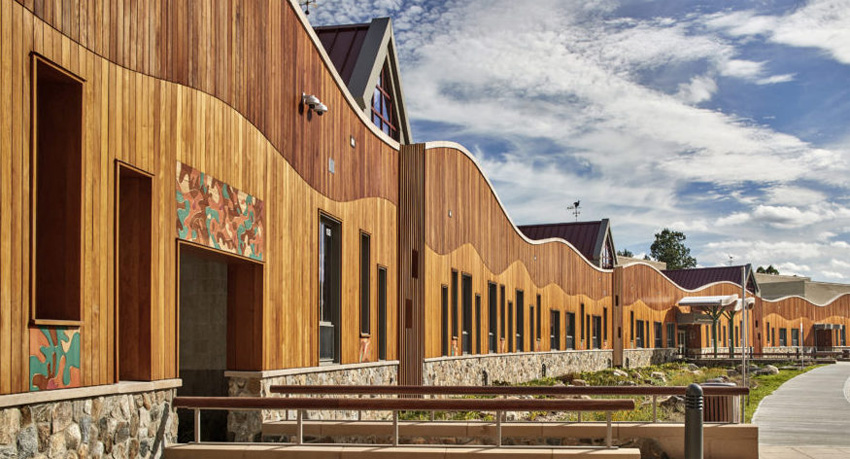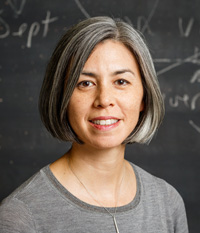Current Trends in School Design
Learning Objectives:
- Define the innovative design strategies employed in the three ambitious, high-profile K–12 school projects drawn from Architectural Record's 2016 and 2017 K–12 Building Type Studies.
- Explain the cost impacts of innovative design for each of these projects.
- Discuss how the design teams optimized the environments for student learning, flexibility, collaboration, and safety.
- Describe the range of approaches for energy-efficient, sustainable design employed by these three innovative projects.
Credits:
This course is part of the Education Academy
This webinar will explore innovative design practices and strategies in new K–12 environments, and will profile three unique projects that focus on the aesthetic, environmental, and safety goals of designers who seek to incorporate optimal learning opportunities for students and enhance the community at large.
Kim Yao, AIA, principal at Architecture Research Office, will present on New York’s Riverdale Country School, a new 23,000-square-foot facility in the Bronx that provides a stimulating place to learn, socialize, and engage with nature. The new Upper Learning Building was designed to allow the school to reconfigure the way classrooms are organized on campus in order to allow for greater collaboration.
Jay Brotman, AIA, managing partner and Julia McFadden, AIA, associate principal, both of Svigals + Partners, will present on the new Sandy Hook Elementary School in Newtown, Connecticut. The ambitious project features safe, inspiring, and meaningful educational architecture and landscape design in support of the needs of the current and future student body, and it serves to advance the vision of the entire community as it rebuilds and rebounds.
Jon Cicconi, AIA, associate director at Skidmore, Owings & Merrill (SOM), will present on the Kathleen Grimm School for Leadership and Sustainability at Sandy Ground (aka P.S. 62) project in Staten Island, New York, the first net-zero-energy school in New York City and one of the first of its kind worldwide. The 68,000-square-foot, two-story school serves 444 prekindergarten through fifth-grade students. The cutting-edge building harvests as much energy from renewable on-site sources as it uses on an annual basis.
The presentations will be followed by a moderated discussion focused on how these ambitious and varied K–12 school design projects address several key issues, including:
- Cost: What tradeoffs, if any, are required to achieve design excellence using energy-efficient, sustainable materials, products, and practices for the optimization of K–12 learning environments? In the featured projects, what was the ultimate value in the specific design decisions?
- Community involvement: What role did the local communities play in determining the scope and main features in the school designs? What were the benefits? What were the obstacles?
- Drivers: Did the school district or school faculty request certain features, or did you, as the architects, propose them? If the latter, what led you to suggest using specific materials or make specific design decisions to support the end goal? How did occupant safety and specific educational goals inform design decisions?
- Design constraints and opportunities

Photo courtesy of Svigals + Partners

|
Growing up in Dallas, Jay Brotman, AIA, Managing Partner at Svigals + Partners, spent much of his youth dreaming up complex structures to build from model kits he would buy whenever the opportunity arose. This helped inform his fascination for design early in life, and it has resulted in a thought-provoking approach to architecture that inspires his clients and colleagues alike. Jay’s ability to orchestrate a highly collaborative design process creates spaces that are functionally responsive and contextually sensitive, including innovative research facilities, campus transformations, and high-performance buildings. |

|
Jon Cicconi, AIA, associate director in SOM’s New York office is a senior designer focused on school design, where his clients include independent schools, public schools, and universities. Some of his key projects include the award-winning Marriott Hall at St. Albans School in Washington, D.C.; a major multi-program addition at Horace Mann School in The Bronx, New York; P.S. 62 Net-Zero Primary School on Staten Island, New York (the first net-zero energy school in the Northeast); the University Center at The New School in New York City; and the New York Jets Headquarters and Training Center in Florham Park, New Jersey. Many of his projects have required consensus building between various stakeholders. He is currently working on a new STEAM expansion and renovation at The Dalton School in New York City. Jon holds a Bachelor of Science in architecture from the University of Virginia and a Master of Architecture from Harvard University’s Graduate School of Design. |

|
At Svigals + Partners, Julia McFadden, AIA, Associate Principle, seeks to create meaning through the artful expression of client and user experiences, goals, and hopes. As facilitator and leader for user and community programming workshops, she steers the process toward well-defined construction priorities even as she identifies design opportunities. As project manager, Julia leads this process for both the new Sandy Hook School in Newtown, Connecticut, and the Engineering & Science University Magnet School to be located on the University of New Haven campus. |

|
Kim Yao, AIA, principal of Architecture Research Office (ARO), a 23-person firm in New York City. She holds degrees from Columbia College: Columbia University and Princeton University. Kim is the adjunct assistant professor of architecture at Columbia University’s GSAPP. She is vice president of public outreach at AIANY, and she is on the executive committees for AIANY and the Center for Architecture. |

|
Icynene-Lapolla is a leader of high performance building material innovations aimed at optimizing the building envelope and maximizing energy efficiency. Available in more than 31 countries, Icynene-Lapolla is a global manufacturer and supplier of spray polyurethane foam for insulation and roofing applications, reflective roof coatings and equipment. Serving architects, builders, contractors and homeowners, Icynene-Lapolla’s solutions enhance residential and commercial structures, in both new and retrofit construction. www.icynene.com |






